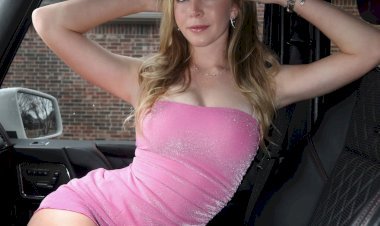How to Find Your Personal Style in Fashion: A Complete Guide
Discover how to find your personal style in fashion with 16 easy steps—mood boards, closet tips, and style words to create a wardrobe you love.
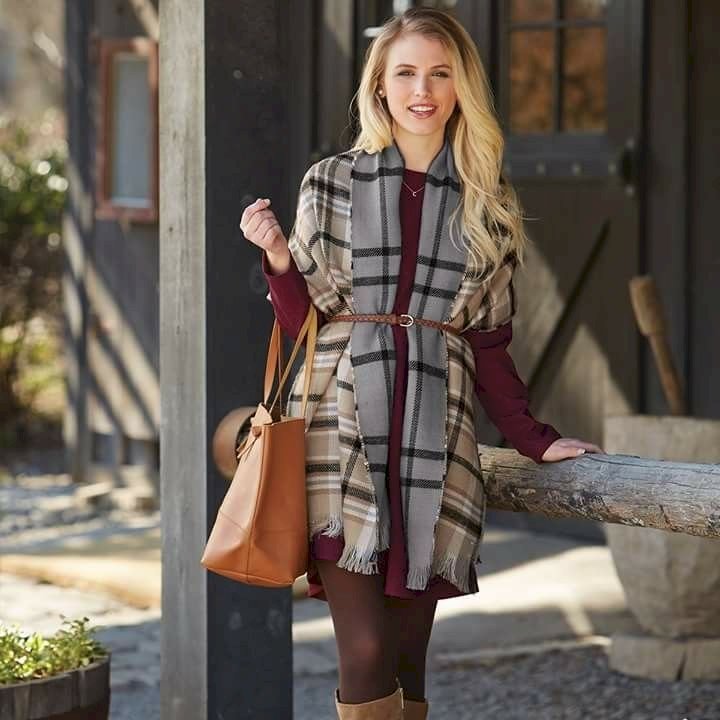
Figuring out your personal style in fashion can feel like solving a puzzle—especially when your favorite Instagram outfits or Netflix characters look great on screen but don’t translate into real life. You might admire certain aesthetics, yet still feel disconnected from your own wardrobe.
Here’s the truth: you don’t need a closet makeover or a pile of trendy purchases to feel confident in what you wear. Great style isn’t about chasing every trend—it’s about uncovering what genuinely makes you feel good.
Whether you're just beginning or rethinking your current wardrobe, discovering your personal style is a rewarding, ongoing journey. It’s about aligning your clothes with your personality, lifestyle, and goals—so you feel like the most authentic version of yourself every time you get dressed.
In this guide, we’ll walk you through smart, realistic steps to help you build a wardrobe that reflects who you are—without the pressure to start from scratch or spend a fortune.
Start with What You Already Like

Image source: i.pinimg.com
Your personal style isn’t something you have to invent from scratch—it’s already hiding in your closet. The first step in discovering your unique fashion sense is to pay attention to what you naturally gravitate toward. Open your wardrobe and ask yourself:
What do I wear on repeat?
Which pieces make me feel like myself?
Maybe it’s your broken-in pair of high-rise jeans, a soft oversized cardigan, or that go-to pair of white sneakers. These favorites are more than just comfy—they’re style signposts, pointing toward what makes you feel confident, comfortable, and “put together.”
To get clearer insight, lay out your top five go-to outfits. These don’t have to be glamorous or trendy—just honest. Then look for repeating elements:
-
Do you lean toward relaxed silhouettes, layered neutrals, or bold graphic tees?
-
Are you consistently choosing earth tones, structured tailoring, or athleisure pieces?
Recognizing these patterns will help you define a personal aesthetic that feels authentic—instead of copying trends or influencers that don’t reflect your lifestyle.
Pro Tip:
Take mirror selfies of your favorite outfits and save them in a dedicated phone album. After a few weeks, flip through and look for visual consistencies in colors, fabrics, cuts, and styling details. This DIY mood board is more honest than anything you’ll find online—and totally personalized.
Read: Want to explore stylish American-made pieces to complement your new look? Check out our Stateside Clothing Brand Guide 2025: What Makes It a Top U.S. Fashion Choice? for top picks that blend quality, comfort, and classic U.S. flair.
Create a Fashion Inspiration Board

Image source: i.pinimg.com
Before you buy new clothes or overhaul your closet, take a step back and gather visual inspiration. This is a creative—and revealing—way to discover what truly appeals to you.
Start by using platforms like Pinterest, Instagram, Tumblr, or even digital scans from fashion magazines. Save or screenshot any outfit, accessory, color palette, or styling detail that catches your eye. Don’t overthink whether the pieces “go together”—just collect what you’re naturally drawn to.
What to Look For:
Once you’ve saved around 20–30 images, go back and analyze them. Ask yourself:
-
Do certain colors show up often?
-
Are you drawn to structured silhouettes or flowy fabrics?
-
Do you lean toward minimalist, edgy, or vintage aesthetics?
-
Are there repeated patterns like plaid, florals, or neutrals?
You might notice trends—like lots of oversized blazers, sneakers with tailored trousers, or monochrome outfits. These patterns reveal core elements of your evolving personal style.
Pro Tip: Organize with Purpose
Create separate digital mood boards or folders based on:
-
Season: Spring, Summer, Fall, Winter
-
Lifestyle: Work, Casual, Weekend, Events
-
Style Types: Minimalist, Romantic, Boho, Streetwear, etc.
This organizational method helps you translate inspiration into real-life outfits and makes future shopping or closet cleanouts much more intentional.
Bonus Tool: Try Canva or Milanote to build free, visually striking boards with drag-and-drop features—perfect if you prefer structure over endless scrolling.
Pick Your Top Three Style Words

Image source: i.pinimg.com
If you’ve ever stared into your closet and felt overwhelmed, you’re not alone. A powerful way to cut through the noise and define your personal style is by choosing three words that reflect how you want your clothes to feel and look—on you.
These aren’t just words—they’re your style anchors. They help steer your outfit choices, shopping decisions, and even how you edit your wardrobe over time.
Step 1: Visualize the Vibe
Close your eyes and imagine your ideal outfit. What words come to mind? Is it sleek? Relaxed? Artistic? Think about how you’d like people to describe your style when you walk into a room.
Start with a brainstorming list of words—aim for at least 10. Then narrow it down to the top three that capture your fashion vision. Not sure where to begin? Here’s a spark list:
-
Cool
-
Natural
-
Classic
-
Streetwear-inspired
-
Chic
-
Creative
-
Tailored
-
Playful
-
Neutral
-
Earthy
Step 2: Use Them as Filters
Once you have your three style words, use them like a decision filter for everything fashion-related.
-
About to buy something new?
→ Ask: Does this match at least two of my three words? -
Getting dressed for a dinner or date?
→ Check: Does this outfit reflect how I want to feel today?
You’ll notice over time that your closet starts to reflect more you—with fewer regrets and mismatched pieces.
Step 3: Adjust as You Grow
Your life isn’t static—and neither is your style. Feel free to revisit and refine your three words every few months. As your lifestyle changes, so will your preferences—and that’s part of the fun.
Quick Tip: Make It Visible
Create a little graphic or note on your phone with your words. Or stick a post-it inside your wardrobe. A visual reminder makes it easier to stay focused when you’re tempted by trends or impulse buys.
Do a Closet Cleanout

Image source: i.pinimg.com
Once you’ve identified what you enjoy wearing, it’s time to clear out the clutter. A messy wardrobe filled with clothes you don’t wear only creates confusion—and makes it harder to define your personal style.
Start with a full wardrobe review. As you handle each item, ask yourself:
-
Does it fit me right now?
-
Have I worn it in the last 6–12 months?
-
Do I feel confident and comfortable in it?
-
Would I buy it again today?
Then, sort everything into three piles:
-
Keep – Pieces you love, wear often, and that align with your style goals.
-
Donate/Sell – Items in good condition that no longer suit you.
-
Maybe – Not sure? Place these in a separate box and set a calendar reminder for 30 days. If you don’t reach for them during that time, it’s probably time to let them go.
Pro Tip: Try the “hanger test.” Turn all your hangers backward. Each time you wear something, turn the hanger forward. After 30–60 days, donate anything still hanging backward.
Decluttering isn’t just about space—it’s about clarity. When your closet holds only what fits, flatters, and feels like you, getting dressed becomes easier and more enjoyable. It’s one of the most transformative steps in finding your personal style.
Also Check: If you're a teen navigating what to wear for school, internships, or your first job interview, don't miss our Business Casual for Teens: The Ultimate 2025 Style Guide for School, Work & Interviews. It’s packed with age-appropriate, confidence-boosting looks that balance professionalism with personality.
Try a Capsule Wardrobe Challenge

Image source: i.pinimg.com
One of the most effective ways to discover your personal style is by creating a capsule wardrobe—a thoughtfully edited collection of versatile clothing that makes outfit building easy and enjoyable. Instead of being overwhelmed by dozens of options, you'll work with a small number of pieces that you truly love and actually wear.
A typical capsule wardrobe includes 25–35 core items such as tops, bottoms, outerwear, and shoes. It excludes undergarments, workout gear, and formalwear. The idea is quality over quantity: every piece should coordinate well with the others and reflect your style goals.
Challenge: 30 Days, 30 Pieces
Start simple:
-
Select 30 clothing items from your existing wardrobe.
-
Commit to wearing only those for the next 30 days.
-
Track your outfits by taking daily photos or notes.
-
At the end of the month, review which items you wore the most, which ones felt the most “you,” and what you didn’t miss.
This exercise helps you identify:
-
Your go-to colors and silhouettes
-
Items you truly enjoy wearing vs. “just in case” pieces
-
Gaps in your wardrobe that are worth investing in
Pro Tip: Use a free wardrobe tracking app like Stylebook or Smart Closet to digitally log outfits and analyze usage patterns.
Unlike impulse shopping or trend-following, this hands-on experiment gives you real-world insight into your fashion preferences—without pressure, guilt, or big spending. It's a powerful way to streamline your closet and gain clarity on your authentic style.
Notice How Clothes Make You Feel

Image source: i.pinimg.com
Your wardrobe isn’t just about looking good—it’s about feeling good. Style is personal, and one of the most powerful tools for discovering it is tuning in to how your clothes make you feel throughout the day.
When you get dressed, ask yourself:
-
Do I feel at ease or restricted in this outfit?
-
Am I walking taller or slouching more?
-
Do I feel like me, or like I'm playing a part?
Clothing has the power to affect your posture, mood, and even confidence levels. A study published in the Journal of Experimental Social Psychology found that what you wear can influence your psychological processes—a phenomenon known as “enclothed cognition.” That means the right outfit doesn’t just reflect who you are—it can enhance how you think and feel.
If a certain look makes you feel confident, capable, or comfortable, that’s a clear sign it aligns with your authentic personal style. On the other hand, if you feel self-conscious or distracted, it may not be the right fit—literally or emotionally.
This emotional feedback loop is often more honest and revealing than what’s trending or what others think. Learning to listen to it is a major step in defining your personal style with intention.
Set a Monthly Style Budget

Image source: i.pinimg.com
Building a stylish wardrobe doesn’t require a huge bank account—it just takes smart planning. One of the best ways to stay consistent and intentional with your fashion choices is to set a monthly style budget that fits your lifestyle.
Whether your budget is $50, $150, or somewhere in between, the key is to spend with purpose, not pressure.
How to Create a Style Budget That Fits Your Life:
- Evaluate your income and needs: Aim to spend no more than 5–7% of your monthly take-home pay on clothing, depending on your priorities.
- Track your spending: Use budgeting apps like YNAB, Mint, or even a simple spreadsheet to see where your fashion dollars are going.
- Differentiate between needs and wants: Prioritize essentials like quality denim, comfortable shoes, or layering basics. Save trendy or one-time pieces for when you have leftover funds.
Style Budget Tip:
If you find yourself impulse shopping often, try the “24-hour rule”: Wait a full day before buying something you weren’t already planning to purchase. It helps cut down on regrets and increases satisfaction with your wardrobe.
Average Monthly Clothing Spend in the U.S. (2025)
|
Age Group |
Avg. Monthly Clothing Budget |
|
18–24 |
$120 |
|
25–34 |
$150 |
|
35–44 |
$135 |
|
45–54 |
$110 |
|
55+ |
$95 |
Source: U.S. Bureau of Labor Statistics Consumer Expenditure Survey, 2025
Why This Matters:
A clear budget keeps you focused and reduces waste. Instead of buying fast fashion you’ll wear once, you’ll build a wardrobe full of pieces that fit your style, your life, and your wallet.
Don’t Chase Every Trend

Image source: i.pinimg.com
It’s easy to get swept up in fashion trends—especially when they dominate your Instagram feed or flood the latest “must-have” lists. But here’s the truth: most trends have a short shelf life, often lasting just a season or two before they’re replaced by the next big thing.
Buying into every new trend can leave you with a closet full of clothes you rarely wear—and little clarity about what actually suits your lifestyle or personality. Fast fashion brands capitalize on this cycle, but it’s not sustainable for your wallet, your style development, or the planet.
What to Do Instead:
Ask yourself:
“Would I still love this piece if no one else was wearing it?”
If the answer is yes, it might be a style match. If not, it’s probably trend-chasing—not self-expression.
You can also apply the 24-Hour Rule:
Before you buy something new, wait at least one day. This pause gives you time to reflect:
-
Does it match my existing wardrobe?
-
Will I wear this often or just once?
-
Does it align with my style goals?
Pro Tip:
Focus on timeless staples—like a tailored blazer, great-fitting jeans, or quality boots—that serve you across seasons. Then, if a trend truly excites you, incorporate it in small doses through accessories or one-off statement pieces.
Mix High and Low Pieces

Image source: i.pinimg.com
Looking stylish doesn’t require a closet full of designer labels. In fact, some of the most fashion-forward individuals master the art of blending affordable basics with a few quality investment pieces—creating looks that feel both elevated and approachable.
Think of it as fashion balance: pair thrifted high-waisted jeans with a tailored blazer that fits you perfectly. Or combine a $15 cotton tee with sleek leather sneakers or a vintage handbag. This mix of “high” and “low” creates contrast, texture, and personality in your outfits.
The key isn’t how much something costs—it’s how well it complements your overall style. Focus on fit, fabric, and how the piece makes you feel, rather than chasing price tags. This approach also helps you stay budget-conscious while still curating a wardrobe that feels uniquely you.
Pro Tip: Invest in timeless essentials—like a structured jacket, leather boots, or a quality handbag—and mix them with everyday finds from vintage shops, sales racks, or budget-friendly retailers. The result? A wardrobe that’s both stylish and smart.
Shop Secondhand or Vintage

Image source: i.pinimg.com
Shopping secondhand isn’t just a budget-friendly option—it’s one of the smartest ways to build a wardrobe that’s both eco-conscious and deeply personal. Thrift stores, consignment boutiques, vintage pop-ups, flea markets, and trusted online platforms like Poshmark, Depop, ThredUp, and Vestiaire Collective offer a wide range of unique finds you won’t see on every rack.
When you buy secondhand, you're:
-
Reducing textile waste and environmental impact
-
Skipping fast fashion trends that fade quickly
-
Finding standout pieces—from retro denim to one-of-a-kind accessories
According to ThredUp’s 2025 Resale Report, the global secondhand apparel market is expected to reach $350 billion by 2028, with 70% of Gen Z and Millennials saying they prefer buying secondhand to new when given the choice. That’s not just a trend—it’s a movement.
Pro Tip:
Start by browsing your local thrift store with a goal in mind (e.g., blazers, leather bags, 90s denim). Having a category focus prevents overwhelm and helps you spot pieces that fit your style goals.
Whether you’re building a minimalist capsule, channeling a vintage aesthetic, or simply hunting for something different, secondhand shopping makes it easier to express your individuality—without draining your wallet or harming the planet.
Read More: If you're also wondering how certain pieces fit into your wardrobe, check out our guide on whether sandals can be considered business casual—and how to style them for work in 2025.
Try Fashion Challenges Online

Image source: i.pinimg.com
Fashion challenges are a fun, free, and creative way to explore your wardrobe—no shopping required. Whether you're in a style rut or just want to push your fashion boundaries, these challenges encourage experimentation using what you already own.
Popular ones like “30 Days, 30 Outfits,” “No Repeat November,” or “10x10 Challenge” (where you style 10 items into 10 outfits) are designed to help you rethink your clothes in fresh ways. You’ll learn how to mix unexpected pieces, identify your favorite go-to looks, and discover the styles, shapes, or colors that make you feel your best.
Even better? Many of these challenges have supportive online communities on platforms like Instagram, TikTok, or Reddit, where participants share daily outfit photos and inspire each other. Joining one can add structure to your style journey—and a sense of fun accountability too.
Pro Tip: Before starting a challenge, snap “before” photos of your usual outfits. Compare them to your looks at the end of the month. You’ll be surprised at how much more confident and creative your style can become!
Fashion challenges are one of the most hands-on, budget-friendly ways to explore how to find your personal style in fashion—no spending, no pressure, just play.
Ask Friends for Style Descriptions

Image source: i.pinimg.com
Sometimes, the people around you can spot fashion patterns you might miss. Ask a few trusted friends to describe your current style in three words—and be open to what they say. You might hear things like "laid-back, sporty, simple" or "bold, eclectic, confident." These outside impressions can help you see your fashion identity from a fresh perspective.
Next, take it a step further: ask how they’d elevate or evolve your style. Would they suggest more structure? A pop of color? Sleeker shoes? This can spark ideas you hadn’t considered.
Pro Tip: Text a few friends this question:
"If you had to describe my style in 3 words, what would they be? And what’s one thing you’d add or change?"
Getting real feedback—especially from people who know your personality—can reveal what’s working and where you might want to experiment. It’s also a fun way to connect and maybe even plan a mini styling session together.
Why it works:
Studies in psychology suggest that self-perception can be limited by routine, while outside opinions often reflect how we actually show up in the world. That makes this step both useful and enlightening.
Follow People Who Dress the Way You Want To

Image source: i.pinimg.com
One of the smartest (and simplest) ways to refine your personal style is to observe people whose fashion choices resonate with you. These might be influencers, content creators, stylists, or even friends and coworkers whose outfits catch your eye in everyday life.
Start by following individuals across different platforms like Instagram, Pinterest, TikTok, or YouTube. Pay attention to how they style themselves:
-
What silhouettes do they favor? (Oversized? Fitted? Tailored?)
-
How do they layer basics and statement pieces?
-
What kind of color palettes, fabrics, or accessories do they rely on?
Instead of mimicking an entire outfit, analyze what draws you in—maybe it's the clean structure, bold patterns, or a cool mix of vintage and modern elements. The goal isn’t to duplicate, but to gather inspiration and adapt what works for you.
Pro Tip: Create a saved folder or Pinterest board for each person’s looks you admire. Over time, patterns will emerge—revealing recurring elements you might want to incorporate into your own wardrobe.
Why It Works
Following others with a strong sense of personal style exposes you to fresh ideas, emerging trends, and styling tricks you might never have thought of. It’s also a way to experiment visually before buying anything—saving you money and helping you stay intentional.
Bonus Tip: Follow a diverse mix of body types, ages, cultures, and fashion aesthetics. This broadens your perspective and helps you discover styles that feel inclusive, realistic, and truly aligned with your lifestyle.
Experiment with Accessories
Image source: encrypted-tbn0.gstatic.com
Accessories are one of the most budget-friendly and creative ways to explore different fashion vibes without overhauling your entire wardrobe. From scarves and belts to statement earrings, hats, bags, watches, and even socks, these small items can completely transform an otherwise simple outfit.
Whether your current style leans minimalist or bold, the right accessories can help you shift the tone of your look in seconds:
-
If you tend to wear neutral basics, try injecting color with a vibrant crossbody bag, patterned headband, or chunky ring.
-
Prefer edgier looks? Add a leather cuff, layered necklaces, or angular sunglasses to dial up your outfit's attitude.
-
Love elegance? Experiment with pearl studs, silk scarves, or a structured handbag to soften and refine your look.
Accessories not only add polish—they help express your personality. They give you room to play with trends (like chunky gold jewelry or mini shoulder bags) without major investment, and allow you to test-drive new aesthetics risk-free.
Pro Tip: Rotate one new accessory each week and see how it changes your favorite outfits. You’ll quickly learn what makes you feel the most confident and stylish.
This hands-on approach to accessorizing is a low-commitment, high-reward strategy for discovering and refining your personal style—especially if you’re just starting to build a cohesive wardrobe.
Document Your Outfits

Image source: i.pinimg.com
One of the most effective (and underrated) ways to discover your personal style is by tracking what you actually wear—not just what you think you like. Start by taking daily or weekly outfit photos, even if it’s just a quick mirror selfie. You don’t need a fancy camera or curated backdrop—just consistency.
Over time, these images become your personal style archive. After 2–4 weeks, scroll through your photos and look for patterns. Ask yourself:
-
Which outfits made you feel the most confident or comfortable?
-
Are there colors or textures you gravitate toward?
-
Do certain silhouettes repeat—like oversized tops, cropped pants, or layered looks?
You might be surprised to find that your style is already forming a visual signature—you just haven’t noticed it yet.
Pro Tip: Create a dedicated album in your phone or use apps like Stylebook, Whering, or Acloset to organize your looks. Some even let you tag mood, occasion, or weather, giving you deeper insights.
This process isn’t about perfection—it’s about reflecting on real-life choices. By analyzing your own wardrobe in action, you'll gain clarity on what genuinely works for your body, lifestyle, and taste. It’s a smart, low-effort strategy that transforms trial and error into intentional style evolution.
Let Your Lifestyle Guide You

Image source: i.pinimg.com
Your personal style should work with your daily routine—not against it. After all, what good is a fabulous outfit if it doesn’t fit your real life?
Start by asking yourself:
Where do I spend most of my time—and what do I need to feel both confident and comfortable there?
Here are a few examples to help you think it through:
-
On-the-Go All Day? Opt for breathable fabrics, stretchy fits, and pieces you can layer. Look for stylish sneakers, crossbody bags, and jackets that move with you.
-
Work Remotely? Focus on elevated loungewear—soft joggers, polished knits, or Zoom-ready tops that look professional but feel relaxed.
-
In an Office Environment? Build a foundation of versatile staples—think neutral blazers, tailored trousers, and comfortable shoes that work from 9 to 5 and beyond.
-
Stay-at-Home Parent or Caregiver? Choose low-maintenance pieces that are easy to wash, move in, and still make you feel put-together.
The key is to align your wardrobe with your reality. If you dress for how you actually live—not just how you want to look—you’ll make better clothing choices, waste less money, and feel more like yourself every day.
Pro Tip: Create a "Lifestyle Pie Chart" where you visually divide your week into activities (e.g., work, errands, social events, downtime). Then make sure your wardrobe supports those segments proportionately.
This is one of the most overlooked but powerful steps in discovering your personal style: style should support your life, not the other way around.
Build Outfits Around One “Hero” Piece

Image source: i.pinimg.com
One of the easiest ways to create a stylish, personalized outfit is to build it around a single standout item—what stylists often call a “hero piece.” This could be a bold blazer in a vibrant color, a vintage leather jacket, a printed midi skirt, or eye-catching sneakers. The goal is to start with something that sparks excitement or feels uniquely “you.”
By anchoring your look around this piece, you simplify the rest of the styling process. You can then add supporting elements—like neutral basics or subtle accessories—that balance the boldness without overwhelming the outfit.
Why It Works:
A hero piece serves as a creative focal point, helping you experiment without overthinking. It also encourages you to embrace individuality rather than trying to “match” everything.
Examples:
-
Pair a bright red coat with all-black basics for a polished, powerful look.
-
Style metallic boots with denim and a simple tee for edgy confidence.
-
Build around a floral wrap dress by adding neutral sandals and a denim jacket.
Pro Tip: Take note of the hero pieces you reach for most. Are they structured or flowy? Bold or subtle? Colorful or neutral? These preferences reveal key elements of your personal style—and help guide future purchases.
Use a Personal Style Quiz (and Reevaluate Often)

Image source: i.pinimg.com
When you’re feeling unsure or overwhelmed, a well-designed personal style quiz can offer a helpful starting point. These quizzes typically ask about your lifestyle habits, color preferences, body shape, fashion icons, and favorite retailers to generate a basic fashion profile—like "modern minimalist," "boho chic," or "edgy streetwear."
While style quizzes aren’t always 100% accurate (after all, your taste isn’t an algorithm), they can give you a vocabulary and visual starting point. Think of them as a style mirror—they reflect patterns and preferences you may not have consciously recognized.
Pro Tip: Retake your favorite quiz every 6–12 months. As your job, daily routines, or interests evolve, so might your style—and revisiting the results helps you stay aligned.
Recommended Style Quizzes to Try:
-
Style Archetype Quiz by The Concept Wardrobe – Based on aesthetic principles and lifestyle fit.
-
Style by Truth Quiz – Focuses on mindset, personality, and lifestyle.
-
Who What Wear’s Personal Style Quiz – A fashion editor-backed tool for trend and vibe exploration.
Use the quiz results as a jumping-off point, not a box. Let them guide your shopping and outfit experiments—not define them.
Learn About Basic Fashion Archetypes

Image source: i.pinimg.com
Fashion stylists and image consultants often group personal styles into foundational archetypes to help people better understand and articulate their fashion preferences. These archetypes include styles like Classic, Minimalist, Romantic, Edgy, Sporty, Bohemian, and Dramatic.
You don’t need to fit perfectly into just one—most people are a mix. But learning about these categories can give you a useful starting point for discovering what feels right and what doesn’t.
For example:
-
Classic: Think tailored silhouettes, neutral tones, and timeless pieces like trench coats, loafers, or button-down shirts.
-
Romantic: Characterized by soft fabrics, pastel tones, lace, florals, ruffles, and feminine silhouettes.
-
Edgy: Features leather, darker palettes, bold cuts, statement accessories, and an overall rebellious vibe.
-
Sporty: Includes athleisure pieces, sneakers, performance fabrics, and functional yet stylish outfits.
-
Minimalist: Clean lines, monochromatic outfits, high-quality basics, and a focus on simplicity over trends.
-
Bohemian: Flowy layers, earthy colors, eclectic prints, natural textures, and a free-spirited aesthetic.
-
Dramatic/Avant-Garde: Bold shapes, high fashion influence, unexpected pairings, and fashion-forward pieces.
Pro Tip: Look at your saved outfit inspirations—are you drawn to flowing maxi dresses and florals (romantic), sharp blazers and trousers (classic), or oversized pieces in neutral tones (minimalist)? These visual clues often reveal the archetype you lean toward.
Understanding these fashion types isn’t about boxing yourself in—it’s about building a style language that helps you shop smarter, create cohesive outfits, and express your identity more clearly.
Track Your Fashion Spending Over Time

Image source: i.pinimg.com
If you're committed to refining your wardrobe—and making smarter style choices—it pays to track your spending. Literally.
Start by keeping a monthly or yearly log of your clothing purchases. Use a simple spreadsheet or budget app to record:
- What you bought (e.g., jeans, shoes, accessories)
- Where you bought it (brand or store)
- Why you bought it (trend, necessity, impulse)
This habit helps you spot patterns. Are you consistently buying trendy items that sit unworn in your closet? Or investing in timeless pieces you wear again and again? Awareness is the first step toward building a style that’s both sustainable and true to you.
Why Tracking Helps:
- Avoid overbuying duplicates
- Identify your shopping triggers (boredom, sales, social media)
- Plan smarter for seasonal updates or wardrobe gaps
Pro Tip: Categorize your purchases into “staples,” “special occasion,” “trendy,” and “regret buys.” Over time, you’ll see where your budget delivers the most value—and where it doesn’t.
Average Annual Clothing Spend by Gender in the U.S. (2024–2025 Estimates)
|
Gender |
Avg. Annual Spend (USD) |
|
Women |
$1,855 |
|
Men |
$1,215 |
|
Non-binary/Other¹ |
~$1,520 (estimated) |
Source: U.S. Bureau of Labor Statistics, Consumer Expenditure Survey (2024 data, projected to 2025).
¹Non-binary/Other figure is an estimate based on blended averages from Statista and Gallup demographic reporting.
Choose a Signature Color or Pattern

Image source: i.pinimg.com
One of the easiest ways to elevate and personalize your wardrobe is by selecting a signature color or pattern. Think of it as your style fingerprint—something that consistently shows up in your outfits and instantly feels “you.”
You might already notice a trend: maybe you gravitate toward classic neutrals like black, white, or beige; warm earth tones like olive, rust, or terracotta; or perhaps bold colors like cobalt blue or fuchsia light you up. Patterns work the same way. Do you love subtle pinstripes, boho florals, playful polka dots, or timeless checks?
Start by reviewing photos of outfits you’ve worn and loved, or take a quick inventory of your closet. Are there colors or prints you consistently reach for or feel confident in? That’s a clue.
Why it works:
Having a few go-to colors or prints creates visual cohesion in your wardrobe. It makes it easier to mix and match pieces, and helps define your personal style in a subtle, effortless way.
Pro Tip: Choose 2–3 signature colors or one print family (like florals or stripes) to repeat across your clothing, shoes, and accessories. This gives your outfits a consistent, curated feel—without being boring or repetitive.
Consider Seasonal Style Changes
Image source: encrypted-tbn0.gstatic.com
Your personal style doesn’t need to stay the same year-round—and it probably shouldn’t. What you love to wear in the heat of summer might feel completely off during the chill of winter, and that’s perfectly natural. These seasonal shifts aren’t just practical—they’re actually great opportunities to explore different parts of your style personality.
In colder months, you might gravitate toward cozy fabrics like wool, corduroy, fleece, or knits, along with layered outfits, boots, and deeper color tones like forest green, burgundy, or charcoal. When warmer weather hits, your preferences may shift toward lightweight fabrics like cotton, linen, and rayon, with softer silhouettes, open-toe shoes, and brighter, more playful colors or prints.
By noticing how your clothing choices change with the seasons, you’ll gain a better understanding of your core style preferences. Do you always lean romantic in spring but prefer a minimalist edge in winter? Or maybe your fall wardrobe is full of structured, tailored pieces while your summer look is relaxed and flowy. These patterns offer powerful clues about your style evolution.
Pro Tip: Create a seasonal wardrobe rotation or Pinterest board for each season. This helps you plan your purchases, highlight your favorites, and stay inspired all year long.
Be Patient and Have Fun
Finding your personal style is not a one-time task—it’s an evolving journey. Your taste will shift as your lifestyle, goals, and inspirations change, and that’s perfectly normal. Instead of rushing to define your “look,” give yourself space to experiment. Try new combinations, make fashion mistakes, and pay attention to what truly feels right. The key is to treat style discovery like a creative adventure, not a checklist. Over time, you’ll build a wardrobe that feels more like you—one outfit at a time.
Check for: Ready to take your style to the next level? Once you’ve defined your personal look, check out the Top 15 Summer Fashion Trends in 2025 Everyone Will Be Wearing to find fresh, on-trend pieces that still align with your style.
Conclusion
Finding your personal style in fashion isn’t a destination—it’s an ongoing journey of self-discovery. It’s less about following rigid rules or chasing the latest trends, and more about learning what makes you feel confident, comfortable, and authentically you.
Whether you’re just starting with a closet refresh, experimenting with mood boards, or defining your “style words,” every small step counts. The key is to stay curious, be patient, and embrace a little trial and error. Style evolves with your life—and that’s part of the fun.
You don’t need a massive wardrobe or a fashion degree to look and feel great. With a bit of reflection, creativity, and intention, you can build a wardrobe that not only looks stylish but also supports your lifestyle and expresses who you are.
So trust the process, take your time, and enjoy the ride—your personal style is already within reach.
FAQs
Q: How long does it take to find your personal style?
It varies for everyone, but many people start noticing patterns in just a few weeks if they pay attention. It’s a process, not a one-time thing.
Q: Can your personal style change over time?
Yes! As your lifestyle, job, or interests change, your style can shift too. That’s totally normal.
Q: What if I like more than one style?
You can mix different styles into one look. For example, sporty and chic, or boho and classic. Personal style is flexible.
Q: Do I need a lot of clothes to have a personal style?
Not at all. In fact, having fewer clothes that you love can make your style clearer. Capsule wardrobes are a great way to try this.
Q: How do I start learning how to find your personal style in fashion?
Begin by looking at what you already wear and like, then slowly try new pieces, track your outfits, and focus on how they make you feel.

 Selina Smith
Selina Smith 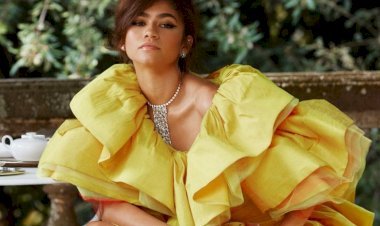
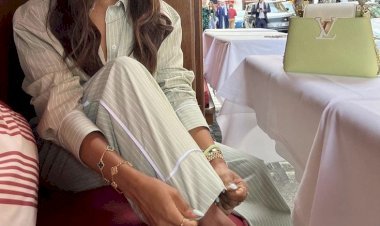
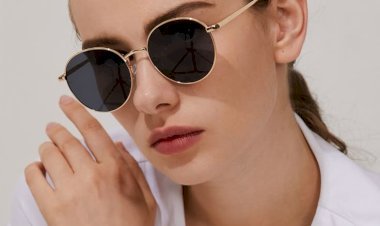
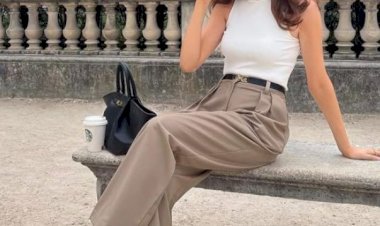
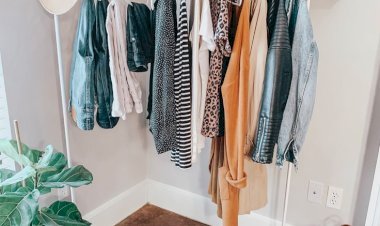





![AutoZone Business Hours [2025]: Complete Guide to Store Times, Holidays & Tips](https://statesidemagazine.com/uploads/images/2025/06/image_140x98_6852d31a1eb7b.jpg)
